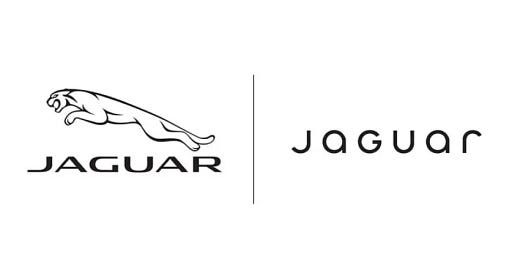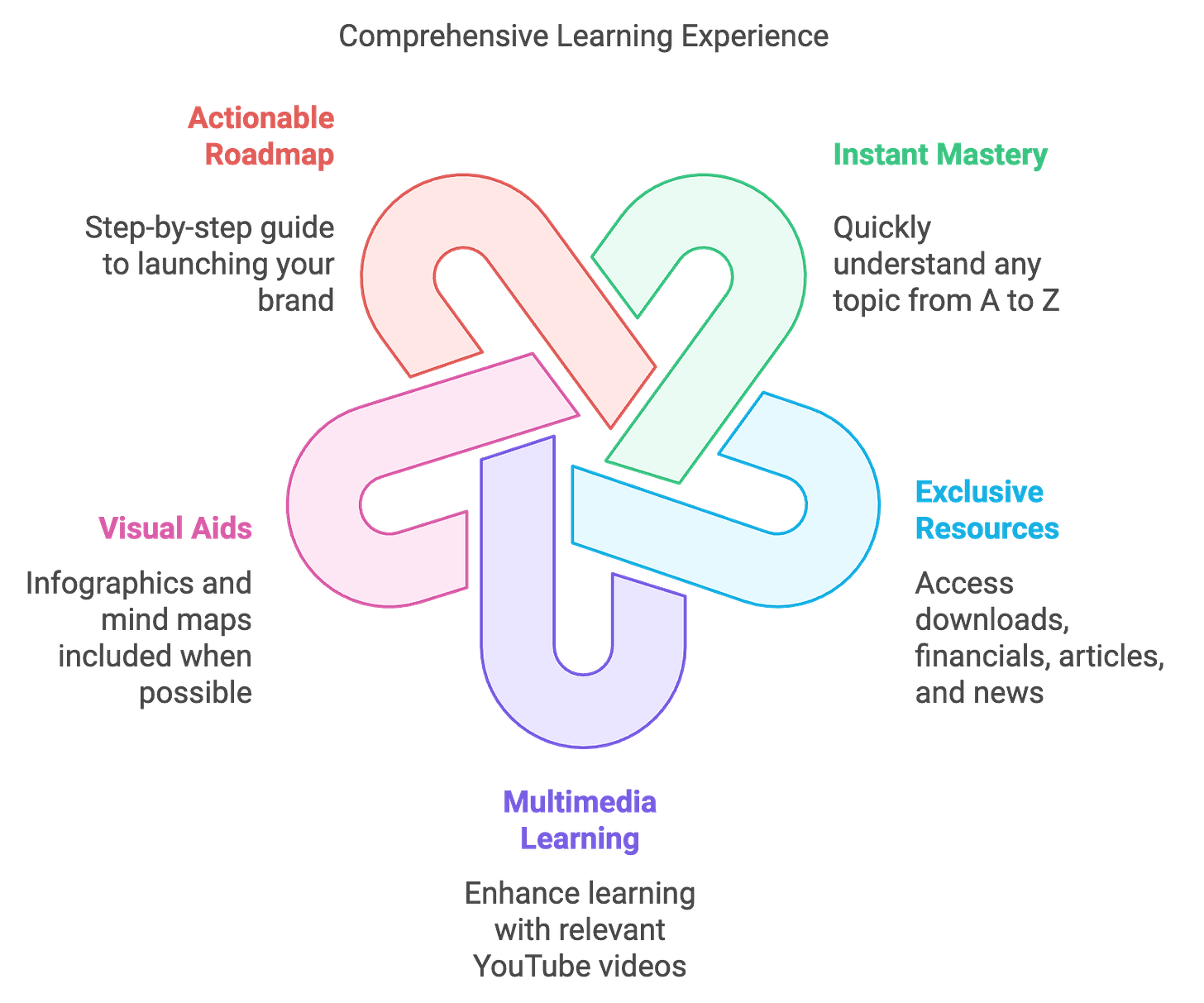🚗⚡ Can Jaguar's Electrifying Shift Teach You the Secrets of Business Innovation?
Discover how Jaguar's bold move to electrification under Tata Motors is shaking up the automotive industry—and what it means for the future of Startups, Innovation, E-commerce, and the Stock Market!
Welcome to The Home School of Business!
100+ Posts | 14K+ Entrepreneurs
🚀 Premium Content Now Free!
Our Mission: Unlocking the secrets of businesses, brands, leaders, and more to inspire entrepreneurs everywhere.
WhatsApp Channel (In a hurry? We’ve packed the highlights of the article right here, paired with the latest breaking news you can’t afford to miss.)
Check out the Insights on Instagram
Why You'll Love Us:
Case Study: The New Jaguar – A Drive Towards Electrification and Luxury
Introduction
Jaguar, a brand synonymous with British luxury and performance, has been redefining itself under the ownership of Tata Motors. The launch of the new Jaguar models signifies the brand's commitment to sustainability, innovation, and luxury, aligning with global trends toward electrification. This case study explores Jaguar’s evolution, leadership strategies, and challenges in a competitive automotive industry. It offers valuable lessons for Home School of Business students on navigating disruption, brand repositioning, and achieving sustainable growth.
Professional Overview
Company Name: Jaguar Land Rover (Subsidiary of Tata Motors)
Established: 1935 (as Jaguar Cars)
Parent Company: Tata Motors (Acquired in 2008)
Global Presence: Over 170 countries
Key Products: Luxury cars, SUVs, and electric vehicles (EVs)
Focus: Transitioning to a fully electric luxury brand by 2039
Market Analysis
Automotive Industry Overview
The global automotive industry is undergoing a transformative phase with the rise of electric vehicles (EVs), autonomous driving, and digital connectivity. Key drivers include:
Electrification: Increased demand for sustainable mobility solutions due to environmental concerns and government policies.
Luxury Segment Growth: Rising disposable incomes in emerging markets are fueling demand for high-end vehicles.
Technological Advancements: Rapid innovations in battery technology, AI, and IoT are reshaping the sector.
Jaguar’s Position in the Industry
Reputation: Jaguar is renowned for its sleek designs, innovative technology, and British heritage.
Market Strategy: Focused on the premium segment, blending performance with sustainability.
Competitors: Tesla, Mercedes-Benz, BMW, Audi, and Lexus in the luxury and EV segments.
Consumer Behavior
Shifting Preferences: Consumers are prioritizing eco-friendly, technologically advanced vehicles.
Brand Loyalty: The luxury segment relies heavily on brand perception and customer experience.
Demand for EVs: There’s a growing appetite for premium electric cars, particularly in North America, Europe, and China.
Business Model of Jaguar Land Rover (JLR): Key Elements in Detail
Jaguar Land Rover’s business model is structured around creating value by combining luxury, performance, sustainability, and global reach. The company’s strategy is centered on long-term growth, market leadership, and delivering exceptional customer experiences.
1. Luxury and Performance
Positioning as a Premier Brand: Jaguar’s heritage in crafting high-performance vehicles with iconic British design appeals to high-income individuals and auto enthusiasts.
High-Performance Engineering: Known for speed, agility, and lightweight materials, Jaguar delivers customizable vehicles that blend comfort with exhilaration.
Differentiation: Luxurious interiors, cutting-edge infotainment, and a focus on delivering a superior driving experience set Jaguar apart.
2. Sustainability
Electrification Goals: Transitioning to an all-electric lineup by 2030, with models like the award-winning I-PACE, and aiming for net-zero emissions by 2039.
Circular Economy: Using recycled materials, promoting battery recycling, and adopting energy-efficient manufacturing.
Tata Group Synergies: Leveraging Tata’s expertise in renewable energy and expanding EV charging infrastructure.
3. Innovation
R&D Investment: Focused on EVs, AI, and autonomous driving, with platforms like Electric Modular Architecture and solid-state battery research.
Technological Integration: Connected cars, IoT systems, and AI-driven features enhance customer experience.
Collaborations: Partnerships with NVIDIA and energy firms drive advancements in AI, autonomy, and battery technology.
4. Global Reach
Market Presence: Strong in traditional markets (North America, Europe, UK) and expanding in China, India, and Southeast Asia.
Distribution Network: Premium dealerships and digital platforms ensure global accessibility.
Customer-Centric Approach: Tailored products, concierge services, and exclusive programs build loyalty.
Adaptation: Complies with global regulations and develops culturally relevant campaigns while maintaining its luxury identity.
Evolution and Growth of Jaguar
Financial Analysis of Jaguar Land Rover
Jaguar Land Rover (JLR) has demonstrated resilience and adaptability in a highly competitive and evolving automotive industry. While its financial performance has been influenced by external challenges and internal transitions, the company continues to make strategic investments and capitalize on emerging trends to secure long-term growth.
Revenue Growth
Increased Revenue Contribution from EV Sales
Shift to Electrification: The transition to electric vehicles (EVs) has driven new revenue streams, with flagship models like the Jaguar I-PACE contributing significantly to sales.
Rising Consumer Demand: With a growing global focus on sustainability, there is heightened demand for EVs in the luxury segment, helping JLR capture a larger share of this market.
Global Electrification Trend: Markets such as the US and Europe are seeing rapid adoption of EVs due to government incentives, tax breaks, and emission regulations, benefiting Jaguar's EV portfolio.
Strong Performance in Key Markets
North America: Consistently a top-performing market for JLR, thanks to high disposable incomes and a preference for premium SUVs and luxury sedans.
China: Rapid urbanization and rising middle-class incomes have boosted demand for luxury vehicles, making China a critical market for Jaguar.
Europe: The region's stringent emission norms and incentives for EV adoption have further bolstered demand for Jaguar's electrified lineup.
Emerging Markets: While these markets contribute less to revenue currently, their long-term potential is significant as luxury segments expand and electrification picks up.
Profitability
Challenges in Profitability
High R&D Costs: As JLR invests heavily in EV technology, autonomous driving, and digitalization, its research and development expenses have risen sharply.
Margin Pressures: Transitioning from traditional internal combustion engine (ICE) vehicles to EVs involves higher production costs due to battery technology and infrastructure needs.
Global Supply Chain Disruptions: Pandemic-related disruptions and semiconductor shortages have impacted manufacturing costs and delivery timelines.
Focus on High-Margin Segments
Luxury SUVs and EVs: JLR is concentrating on high-margin vehicles such as the Range Rover, Range Rover Sport, and premium EVs, which provide better profitability compared to mid-segment offerings.
Customization Options: Offering personalized configurations for customers enhances the profit per unit while strengthening brand exclusivity.
Efficient Cost Management: Streamlined operations and manufacturing processes, including localized production in key markets, have helped mitigate rising input costs.
Investments
Substantial Investments in Key Technologies
Battery Technology: JLR is allocating significant resources toward developing next-generation battery systems, including solid-state batteries, to improve EV range, safety, and efficiency.
Autonomous Driving Systems: The company is partnering with leading tech firms to develop cutting-edge autonomous vehicle technologies, ensuring it remains competitive in the future mobility landscape.
Digital Infrastructure: Investments in connected car technology, over-the-air software updates, and AI-powered in-car systems are enhancing customer experiences and driving sales.
Strategic Partnerships
Tata Power Collaboration: JLR's partnership with Tata Power is crucial in expanding EV charging networks, particularly in India and other emerging markets, to support broader EV adoption.
Third-Party Collaborations: Alliances with tech firms such as NVIDIA and Waymo for autonomous systems and AI integration further strengthen JLR’s innovation capabilities.
Financial Stability
Backed by Tata Motors’ Robust Financial Resources
Parent Company Support: JLR benefits from Tata Motors’ global presence, diversified operations, and financial backing, enabling it to withstand industry disruptions and fund its ambitious EV transition.
Long-Term Vision: Tata Group’s focus on sustainability and technology aligns with JLR’s goals, providing stability and strategic guidance during market shifts.
Flexibility in Financing: Access to Tata Group’s capital allows JLR to invest in R&D and infrastructure without compromising operational efficiency.
Resilience Amid Industry Disruptions
Pandemic Recovery: JLR has shown recovery in sales and revenues following pandemic-related slowdowns, leveraging strong demand for premium vehicles.
Supply Chain Management: Proactive measures to address semiconductor shortages and other supply chain bottlenecks have minimized long-term financial impact.
Sustainability Initiatives
Carbon Neutrality: By committing to a net-zero carbon footprint by 2039, JLR positions itself as a responsible and forward-thinking brand, appealing to environmentally conscious investors and consumers.
Circular Economy: Adoption of sustainable practices, including recycling materials and reusing batteries, contributes to cost savings and long-term financial health.
Marketing and Customer Acquisition
Challenges Faced by Jaguar Land Rover
SWOT Analysis
Strengths
Weaknesses
Opportunities
Threats
Roadmap to Achieving Success Like Jaguar
Educational Foundation
Invest in Knowledge: Build expertise through formal education in fields like automotive engineering, business management, or technology innovation. Focus on sustainability and advanced vehicle systems to stay ahead in a dynamic industry.
Vision with Purpose
Align Goals with Impact: Develop a mission that addresses societal needs, such as creating eco-friendly transportation solutions or reducing carbon footprints, aligning business ambitions with meaningful contributions to society.
Strategic Investments
Prioritize Innovation: Dedicate resources to research and development for advanced technologies like electric vehicles, autonomous systems, and digital platforms. Innovation ensures long-term competitiveness and differentiation in the market.
Global Expansion
Expand Strategically: Enter untapped markets with high growth potential, such as emerging economies, while maintaining brand exclusivity and tailoring products to regional preferences.
Resilience and Adaptability
Stay Agile: Continuously adapt to trends such as electrification, autonomous driving, and digital transformation. Embrace market changes and challenges as opportunities to innovate and grow.
Conclusion
Jaguar’s journey under Tata Motors highlights the importance of strategic vision and resilience in an evolving industry. Its commitment to electrification, combined with luxury craftsmanship, positions it as a formidable player in the premium automotive market. The company’s challenges and triumphs offer a wealth of insights into leadership, innovation, and sustainability for MBA students and aspiring entrepreneurs.
HSB Important Articles and References :We value your feedback! Let us know your thoughts and suggest future Topics by filling out this quick Google form.Click Here
The History of Jaguar
Check out the Jaguar Website, post transition
THE JLR REIMAGINE Strategy
JLR Annual Financial Report 2023
HSB Video Vault :-
The Home School of Business WEBSITE
Best Regards,
The Home School of Business Team













